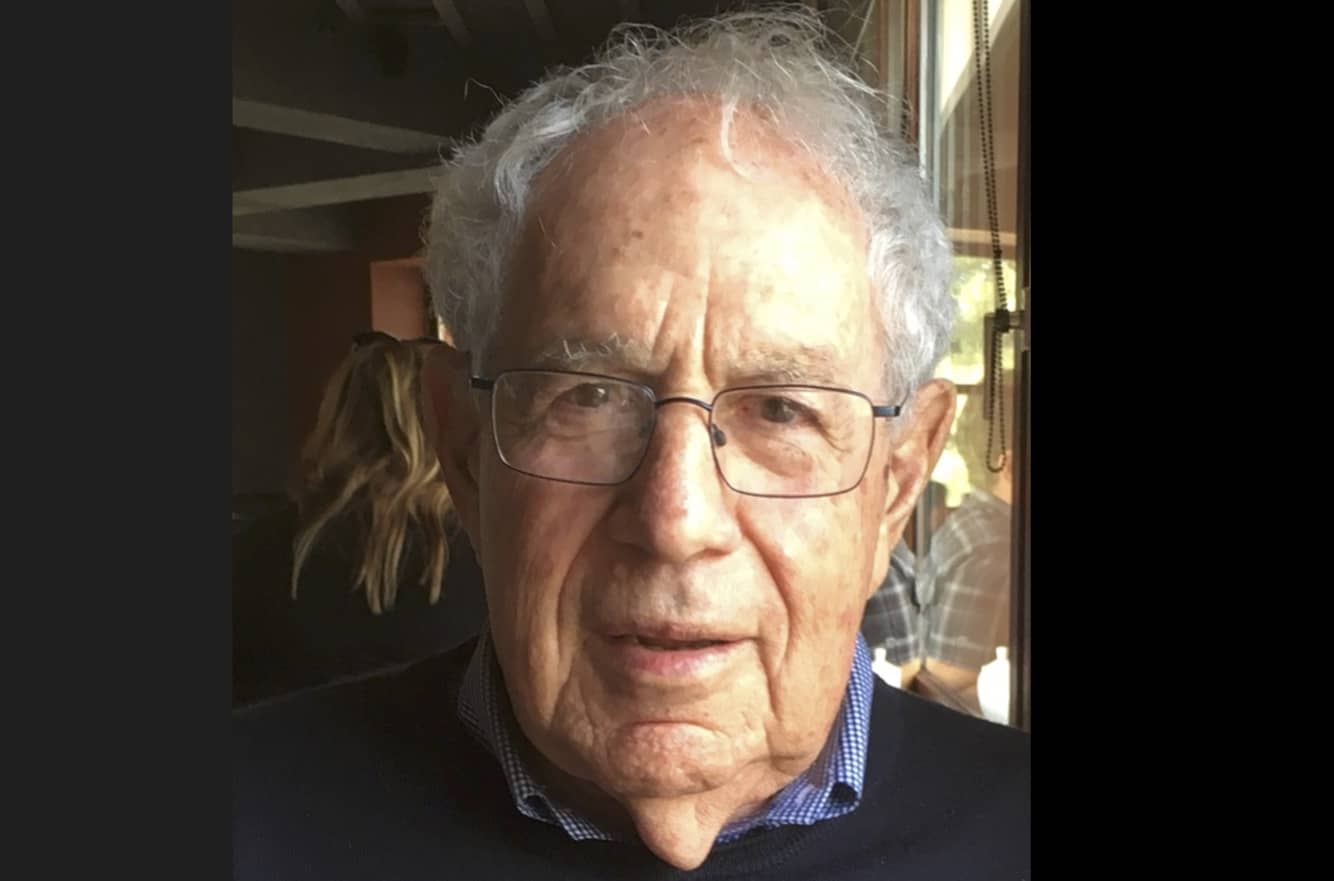
www.buildingsandcities.org/insights/news/richard-bender.html
Remembering Richard Bender

Andrew Rabeneck reflects on the recent passing of Richard Bender, dean emeritus of the College of Environmental Design, University of California Berkeley
Professor Richard
Bender (1930 - 2022) was an educator, architect and planner with a
practice specializing in urban and community planning, town planning, campus
planning and the planning and replanning of obsolete and damaged industrial and
waste sites.
I met first Richard (Dick) Bender in 1969 in Berkeley - we became lifelong friends. He was a Harvard-educated architect and planner who had been teaching at Cooper Union in New York. Gerald McCue, then chair of the University of California Berkeley's College of Environmental Design (CED), recruited him to come to teach at CED. McCue had succeeded the architect Charles Moore who, although he had attracted some wonderful teaching staff including Ezra Ehrenkrantz, Christopher Alexander, Horst Rittel and others, was not a strong manager, and the school was getting big and unwieldy; it needed firm and imaginative management. Dick was soon appointed chair of architecture and then dean of CED, where he skillfully and sympathetically kept the unruly faculty mostly on side. He and his wife Sue brought a strong whiff of East Coast sophistication to laid back Berkeley.
Dick was particularly impressed with Ehrenkrantz's bold initiatives to reshape America's building industry on which I too was working. Dick was on the National Commission on Urban Problems and New York Mayor Lindsay's housing task force, making him a strong ally for Ehrenkrantz in gaining the attention of Housing and Urban Developent (HUD) and other government organisations such as the Institute for Applied Technology at the then National Bureau of Standards, then headed by Donald Schon. Dick became a valuable adviser to Ehrenkrantz throughout George Romney's (Secretary of State at HUD 1969-73) ill-fated Operation Breakthrough program.1
Later during the 1980s and 1990s, after I had returned from America, Dick would often come to London in his capacity as "GC-5" Professor of Urban Design and Construction at Tokyo University. The position was funded by Japan's largest contractors, and they visited to understand what was happening at Canary Wharf and in the City of London. We also stayed in touch through John Parman who worked closely with Dick as he or they consulted or advised on master plans for University of California campuses, including Berkeley, Davis, Merced, San Diego and Santa Cruz. Dick, John, and Emily Marthinsen, the former Berkeley Campus Architect, wrote extensively on Berkeley as a university city. (John Parman was also the co-founder and publisher of the Design Book Review2 to which I contributed quite frequently.)
Dick's unique gift was a strong diagnostic sense, like a great doctor. He could quickly understand the essence of a plan or project and then give sound advice that people were happy to take on board. He frequently spotted things others overlooked, particularly about a project's impact on the surrounding city. He became a valued contributor to selection panels for important projects both in Japan and in America, such as the Getty Centre in Los Angeles.
I visited with Dick and Sue on yearly visits to the Bay Area, until 2019. We kept up a vigorous correspondence about technology and the globalisation of construction until just last year. I shall miss him very much, as will a worldwide network of "friends of RB," including students from Berkeley and Cooper Union, and collaborators sharing his many interests.
Notes
1. Bender, R. & Wilson, F. (1973). A Crack in the Rear View Mirror: A View of Industrialized Housing. New York: Van Nostrand Reinhold. This book unpicks the Operation Breakthrough program in a perceptive way, analysing various attempts at industrialised housing.
2. Design Book Review https://johnjparman.medium.com/re-design-book-review-1983-2002-4dd0bc4859dd
Latest Peer-Reviewed Journal Content
Acceptability of sufficiency consumption policies by Finnish households
E Nuorivaara & S Ahvenharju
Key factors for revitalising heritage buildings through adaptive reuse
É Savoie, J P Sapinski & A-M Laroche
Cooler streets for a cycleable city: assessing policy alignment
C Tang & J Bush
Understanding the embodied carbon credentials of modern methods of construction
R O'Hegarty, A McCarthy, J O'Hagan, T Thanapornpakornsin, S Raffoul & O Kinnane
The changing typology of urban apartment buildings in Aurinkolahti
S Meriläinen & A Tervo
Embodied climate impacts in urban development: a neighbourhood case study
S Sjökvist, N Francart, M Balouktsi & H Birgisdottir
Environmental effects of urban wind energy harvesting: a review
I Tsionas, M laguno-Munitxa & A Stephan
Office environment and employee differences by company health management certification
S Arata, M Sugiuchi, T Ikaga, Y Shiraishi, T Hayashi, S Ando & S Kawakubo
Spatiotemporal evaluation of embodied carbon in urban residential development
I Talvitie, A Amiri & S Junnila
Energy sufficiency in buildings and cities: current research, future directions [editorial]
M Sahakian, T Fawcett & S Darby
Sufficiency, consumption patterns and limits: a survey of French households
J Bouillet & C Grandclément
Health inequalities and indoor environments: research challenges and priorities [editorial]
M Ucci & A Mavrogianni
Operationalising energy sufficiency for low-carbon built environments in urbanising India
A B Lall & G Sethi
Promoting practices of sufficiency: reprogramming resource-intensive material arrangements
T H Christensen, L K Aagaard, A K Juvik, C Samson & K Gram-Hanssen
Culture change in the UK construction industry: an anthropological perspective
I Tellam
Are people willing to share living space? Household preferences in Finland
E Ruokamo, E Kylkilahti, M Lettenmeier & A Toppinen
Towards urban LCA: examining densification alternatives for a residential neighbourhood
M Moisio, E Salmio, T Kaasalainen, S Huuhka, A Räsänen, J Lahdensivu, M Leppänen & P Kuula
A population-level framework to estimate unequal exposure to indoor heat and air pollution
R Cole, C H Simpson, L Ferguson, P Symonds, J Taylor, C Heaviside, P Murage, H L Macintyre, S Hajat, A Mavrogianni & M Davies
Finnish glazed balconies: residents' experience, wellbeing and use
L Jegard, R Castaño-Rosa, S Kilpeläinen & S Pelsmakers
Modelling Nigerian residential dwellings: bottom-up approach and scenario analysis
C C Nwagwu, S Akin & E G Hertwich
Mapping municipal land policies: applications of flexible zoning for densification
V Götze, J-D Gerber & M Jehling
Energy sufficiency and recognition justice: a study of household consumption
A Guilbert
Linking housing, socio-demographic, environmental and mental health data at scale
P Symonds, C H Simpson, G Petrou, L Ferguson, A Mavrogianni & M Davies
Measuring health inequities due to housing characteristics
K Govertsen & M Kane
Provide or prevent? Exploring sufficiency imaginaries within Danish systems of provision
L K Aagaard & T H Christensen
Imagining sufficiency through collective changes as satisfiers
O Moynat & M Sahakian
US urban land-use reform: a strategy for energy sufficiency
Z M Subin, J Lombardi, R Muralidharan, J Korn, J Malik, T Pullen, M Wei & T Hong
Mapping supply chains for energy retrofit
F Wade & Y Han
Operationalising building-related energy sufficiency measures in SMEs
I Fouiteh, J D Cabrera Santelices, A Susini & M K Patel
Promoting neighbourhood sharing: infrastructures of convenience and community
A Huber, H Heinrichs & M Jaeger-Erben
New insights into thermal comfort sufficiency in dwellings
G van Moeseke, D de Grave, A Anciaux, J Sobczak & G Wallenborn
'Rightsize': a housing design game for spatial and energy sufficiency
P Graham, P Nourian, E Warwick & M Gath-Morad
Implementing housing policies for a sufficient lifestyle
M Bagheri, L Roth, L Siebke, C Rohde & H-J Linke
The jobs of climate adaptation
T Denham, L Rickards & O Ajulo
Structural barriers to sufficiency: the contribution of research on elites
M Koch, K Emilsson, J Lee & H Johansson
Disrupting the imaginaries of urban action to deliver just adaptation [editorial]
V Castán-Broto, M Olazabal & G Ziervogel
Nature for resilience reconfigured: global- to-local translation of frames in Africa
K Rochell, H Bulkeley & H Runhaar
How hegemonic discourses of sustainability influence urban climate action
V Castán Broto, L Westman & P Huang
Fabric first: is it still the right approach?
N Eyre, T Fawcett, M Topouzi, G Killip, T Oreszczyn, K Jenkinson & J Rosenow
Social value of the built environment [editorial]
F Samuel & K Watson
Understanding demolition [editorial]
S Huuhka
Data politics in the built environment [editorial]
A Karvonen & T Hargreaves



Latest Commentaries
Decolonising Cities: The Role of Street Naming
During colonialisation, street names were drawn from historical and societal contexts of the colonisers. Street nomenclature deployed by colonial administrators has a role in legitimising historical narratives and decentring local languages, cultures and heritage. Buyana Kareem examines street renaming as an important element of decolonisation.
Integrating Nature into Cities
Increasing vegetation and green and blue spaces in cities can support both climate change mitigation and adaptation goals, while also enhancing biodiversity and ecological health. Maibritt Pedersen Zari (Auckland University of Technology) explains why nature-based solutions (NbS) must be a vital part of urban planning and design.